Hanging artwork in your home can be just as tricky as knowing what to buy.
No one wants to look up and see empty walls. But where to start adorning your home with meaningful, beautiful artwork? Are there really hard and fast rules when it comes to selecting and installing artwork in your home? What best practices for hanging artwork are based on science, and what is up to the viewer to decide? Like in art itself, the answers to these questions can often be controversial. But let’s dig in and see what the experts say. Read on to find out how to maximize the space and impact of your rooms through art.
Hang Art at Eye Level
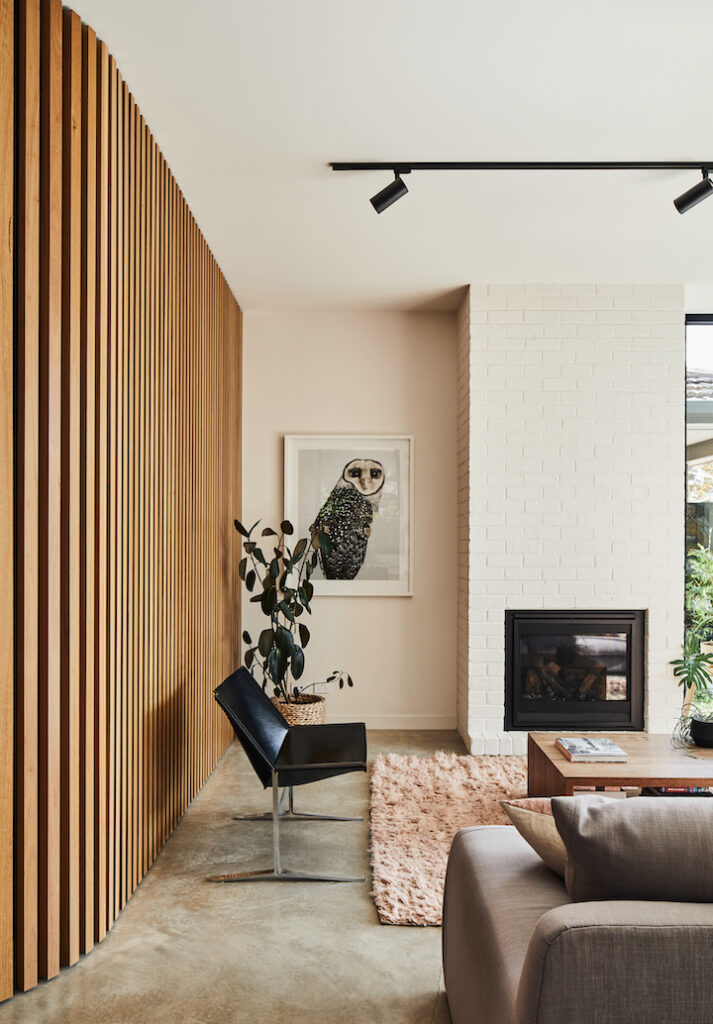
Eye level is typically considered to be 57-60 inches up from the ground on which you stand, despite wide human variances in height. And while all your artwork on a wall does not have to be at the same center height, it is often best to choose a number and stick with it. Hanging all framed pieces at 57” on center will put everything at eye level and look cohesive, no matter the size of the frame, creating an organized, purposeful look down a hallway or in a room. That said, hanging a large piece of art higher than eye level can make a room feel larger and take advantage of vertical space in your home. Concurrently, hanging small pieces below eye level can make a setting feel more intimate. Artwork ascending a stair well can also be hung at a chosen point on center, then measured up from each stair to maintain consistency.
The 2-3 Rule & The Rule of 3s
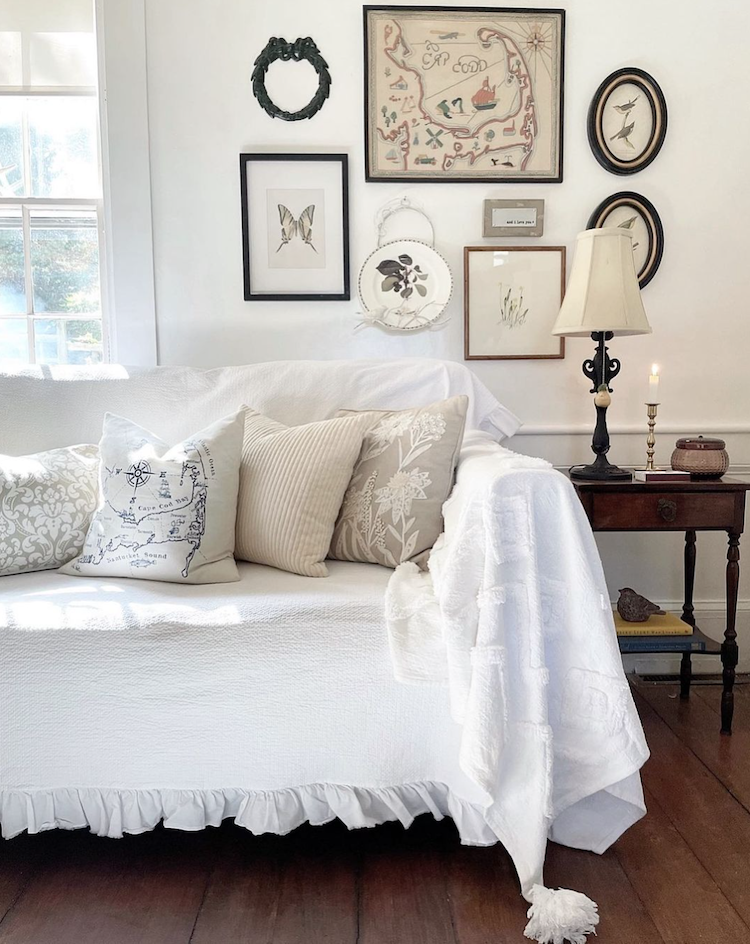
There are many “2-3 rules” out there, from politics to design, and art is no exception. Experts say a piece of art should be two-thirds the width of the furniture it hangs above, such as a bed, bathtub, sofa, or fireplace, and fill no more than three-quarters of the space (see the 60-40 rule). Additionally, the popular “rule of threes” states that things tend to be more visually appealing to the eye and the brain when arranged in odd numbers—three, six, nine.
Centered
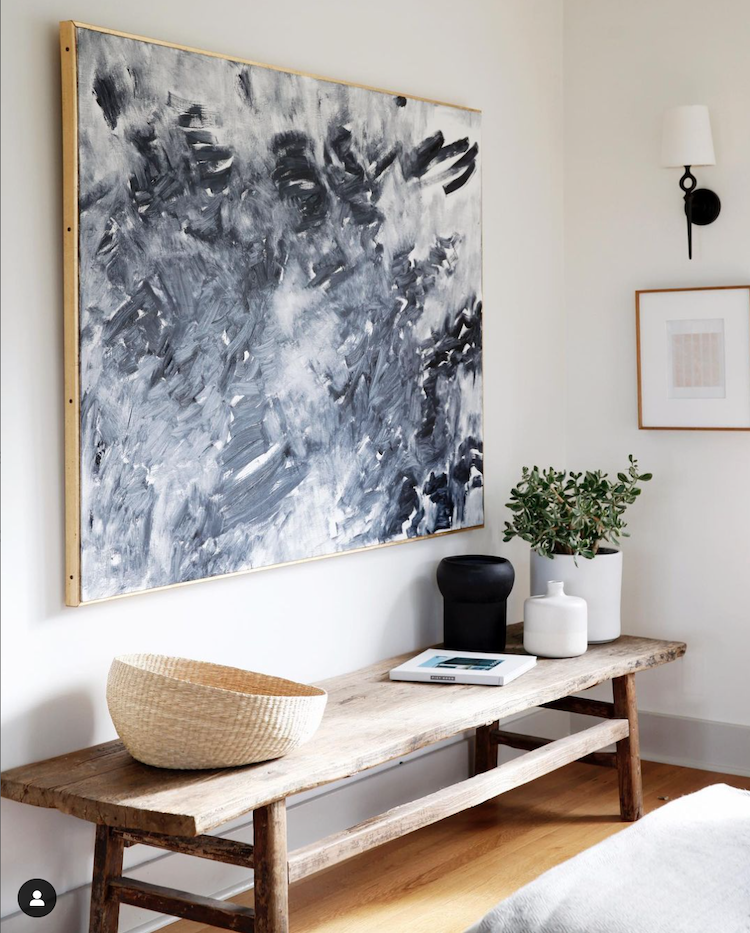
Center art over furniture for a more balanced look in a room. This may be over a couch, a bar, or a bed. Height in these cases should be adjusted for back-of-head clearance (on a sofa) and the amount of space available overhead.
The 3-6 rule
This common rule says to leave between 3 to 6 inches of space between each piece of art. Closer than three inches and the pieces can’t breathe and look crowded; and more than six inches of space causes them to lose their relationship to each other.
Salon Style
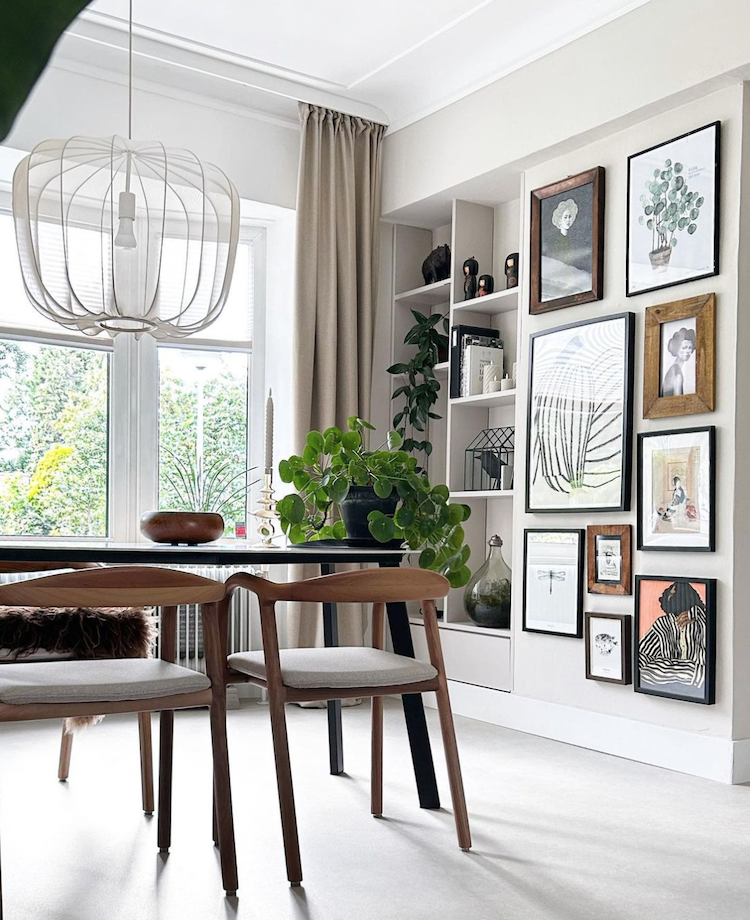
When hanging a group of smaller prints on a wall, typically referred to as salon style or gallery style, try staggering the pieces around your line of sight. Stagger them so that none of the pieces line up at the top or the bottom, but overlap using the 3-6-inch rule to maintain visual connectedness.
Triptychs

Oftentimes an artist will create a large piece of horizontal artwork that is presented in three separate but conjoined pieces. They are often framed separately or mounted flat to a gallery box or other type of modern float mount. Some nature photography and modern abstract paintings lend themselves well to this treatment. They could also be presented as a diptych or even as four separate vertical pieces that together make one large landscape, but the Rule of Three tends to make the triptych the most popular and pleasing approach.
The 60-40 rule
This common bit of advice says to leave at least 40 percent of a wall blank, whether that’s a gallery cluster or a large scale installation. The art shouldn’t take up more than 60 percent of your wall space.
Leaned Art
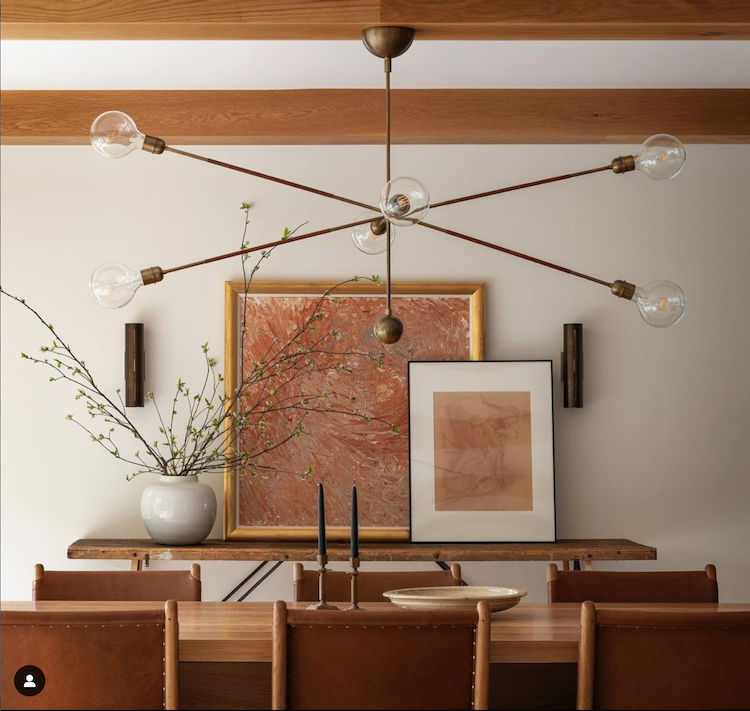
Sometimes the best way to present art is to not hang it at all. Large-scale vertical pieces sometimes sit directly on the ground, leaning against a wall or in a corner. Other times framed pieces might sit on a mantle or a coffee table, or even on a chalk railing, making it easy to switch out different pieces depending on your mood or the season. If you have a wall that is troublesome in terms of its surface or material, consider hanging art from the ceiling.
We’re not suggesting that all of this is necessarily easy or should be done on your own. Most galleries and designers offer professional installation and that’s often a great idea. Professional installers know how to transport, handle, and install your art in ways that you might not even think of, or have the ability to execute. If you’ve got an expensive painting or photograph in a heavy frame, it can be best to enlist the help of a professional. But that said, if you follow some of our handy tips and insights listed above, you should be able to tackle most of your art hanging needs yourself if you’ve got modern drywall walls and properly framed artwork.
Other times you’ll encounter art that looks nicely framed but is lacking a wire or hangers on the back. A professional frame shop can take care of this for you. But another word of warning: beware of sticker shock at frame shops. For a myriad of reasons, framing can quickly get absurdly expensive, often more than the piece of art itself, so get a price before dropping off your piece.
POINTERS FROM THE PROS:
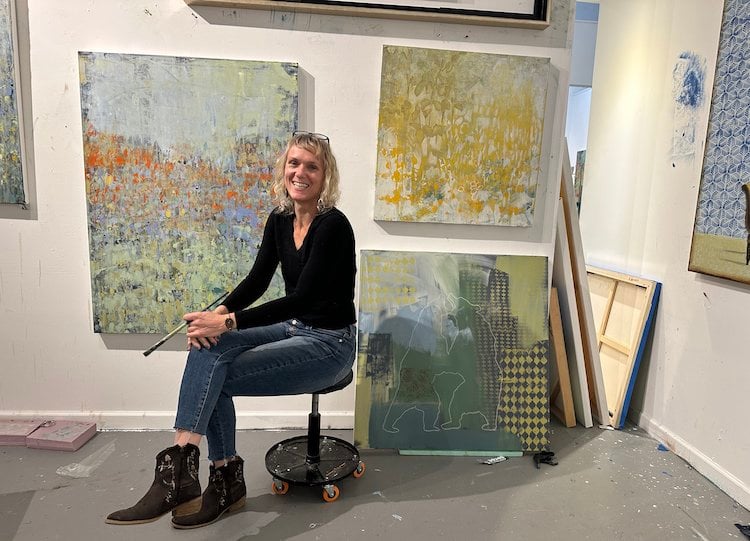
Asheville, NC,-based artist and gallery co-owner Alicia Armstrong has been working with designers, art consultants, and homeowners for more than 20 years.
“The only basic rule for me is hanging work at eye level. Some people like a lot of white space around the piece, others prefer more of a salon style. The preference is so personal,” she explains. “A lot of people are hanging work above something. Obviously if you hang a piece over a sofa you want to be sure you clear the top of the head. Or if it’s a buffet, you want to be over the top of the glassware, that kind of thing. Just like people’s homes, people hang artwork according to their own aesthetic.”

Linda Shropshire, founder and gallery director of Durham’s Ella West Gallery, agrees, “Your style will dictate whether you want artwork that is hung closely as in a salon style or if you want one singular painting or sculpture to carry an entire space,” she says. “For larger walls, I do enjoy a triptych. This is a perfect way to add life and energy to a spot where furniture is needed. Your mood, style and weight of the artwork will need to be considered in making a decision.”
+ Avoid direct sun exposure
“If there’s one spot in the house where the sun is glaring all day, that might be a concern with certain materials,” says Armstrong. Even with UV coatings or protective glass, direct sunlight every single day can take its toll on paintings and photographs. Of course museums and galleries use even more caution when considering direct sun on works of art, but ultimately it will come down to what spaces are available to you, how badly you want art in those spaces, and the price tag of the works you want to hang there.
+ Use the proper hangers
While the art of framing—and employing the right types of hangers and hardwear—is the subject of its own article, it’s important to consider. Always read the instructions on hangers you buy, or use the hangers provided by the frame shop. Protect your investments by using weight-appropriate hangers at all times and be mindful of the surface you are going in to.
+ How high is too high
When consulting with clients on art installation, Shropshire says she has no hard and fast rules except one, “Avoid hanging art too high! I usually set the center my art to be about 5’ 4”.”
“Most importantly,” says Shropshire, “purchase art you want to live with everyday. Let it be something that speaks to some part of your story, your history, your future or your wildest dreams.”
~ This article on the Art of Hanging Artwork was excerpted from the pages of NEST Magazine…To subscribe to NEST Magazine, click here. For the full Winter 2023 issue and photo credits for this article, click through here.
